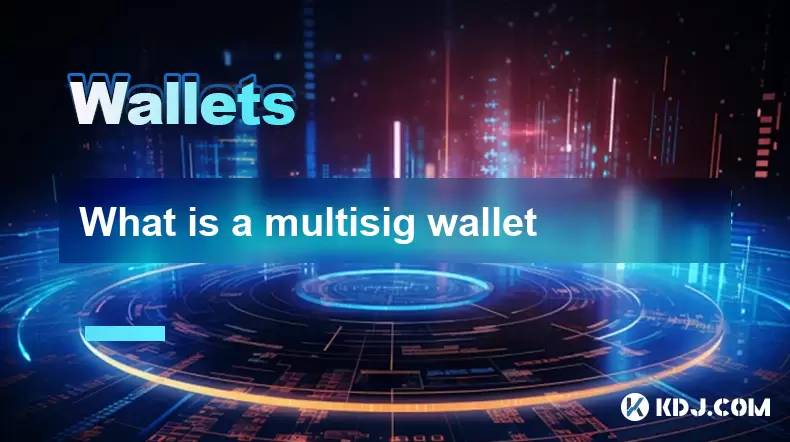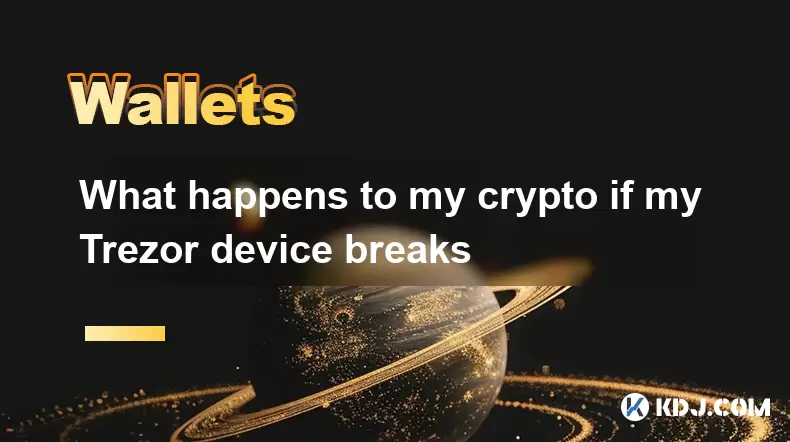-
 Bitcoin
Bitcoin $117,462.8204
-2.03% -
 Ethereum
Ethereum $3,061.1595
1.10% -
 XRP
XRP $2.9139
-2.19% -
 Tether USDt
Tether USDt $1.0002
0.02% -
 BNB
BNB $685.1357
-1.24% -
 Solana
Solana $161.3803
-2.11% -
 USDC
USDC $1.0002
0.04% -
 Dogecoin
Dogecoin $0.1948
-2.92% -
 TRON
TRON $0.2987
-0.89% -
 Cardano
Cardano $0.7330
-1.27% -
 Hyperliquid
Hyperliquid $47.7888
0.13% -
 Stellar
Stellar $0.4514
-2.93% -
 Sui
Sui $4.0169
2.74% -
 Chainlink
Chainlink $15.7088
-2.57% -
 Hedera
Hedera $0.2356
-3.33% -
 Bitcoin Cash
Bitcoin Cash $488.6656
-3.61% -
 Avalanche
Avalanche $21.2955
-1.47% -
 UNUS SED LEO
UNUS SED LEO $9.0415
0.42% -
 Shiba Inu
Shiba Inu $0.0...01332
-0.82% -
 Toncoin
Toncoin $3.0124
-0.62% -
 Litecoin
Litecoin $94.2175
-2.07% -
 Polkadot
Polkadot $4.0011
-0.61% -
 Monero
Monero $333.5714
-3.46% -
 Uniswap
Uniswap $9.1114
-1.56% -
 Dai
Dai $1.0000
0.02% -
 Ethena USDe
Ethena USDe $1.0005
0.00% -
 Bitget Token
Bitget Token $4.4951
1.87% -
 Pepe
Pepe $0.0...01242
0.47% -
 Aave
Aave $321.9943
0.51% -
 Bittensor
Bittensor $434.1984
5.13%
Is it safe to store my Secret Recovery Phrase on my computer?
Storing your Secret Recovery Phrase on a computer poses significant risks due to malware, phishing, and other cyber threats that can compromise your funds.
Jul 15, 2025 at 08:14 pm

Understanding the Secret Recovery Phrase
A Secret Recovery Phrase, often referred to as a seed phrase, is a sequence of 12 or 24 words generated when setting up a cryptocurrency wallet. These words serve as the master key to your digital assets and can be used to restore access to your wallet if your device is lost, damaged, or compromised. The importance of safeguarding this information cannot be overstated. If someone gains access to your recovery phrase, they can take full control of your funds without leaving a trace.
Storing this phrase on a computer may seem convenient, especially for those who frequently use software wallets or interact with decentralized applications (dApps). However, this method introduces significant risks that must be carefully considered.
Risks Associated with Digital Storage
Computers are inherently vulnerable to various types of threats. Malware, phishing attacks, and unauthorized remote access are just a few examples of how sensitive data like a seed phrase can be compromised. If you store your Secret Recovery Phrase in a text file, document, or password manager on your machine, it could potentially be exposed through:
- Keyloggers that record keystrokes
- Screen capture tools that take screenshots
- Ransomware that encrypts files and demands payment
- Unpatched operating systems that leave backdoors open
Even if you believe your system is secure, the dynamic nature of cyber threats means vulnerabilities can emerge unexpectedly.
Encryption and File Protection Measures
Some users attempt to mitigate risks by encrypting their files or using password managers to store their Secret Recovery Phrase. While encryption adds a layer of security, it’s not foolproof. For instance:
- Weak passwords can be cracked through brute-force attacks
- Encrypted files can be copied and attacked offline
- Password managers themselves can be compromised
Additionally, many people forget or misplace decryption keys or passwords over time, which could result in permanent loss of access to their recovery phrase.
Alternatives to Computer-Based Storage
Given the risks associated with storing your Secret Recovery Phrase digitally, experts generally recommend more secure alternatives:
- Physical backups on paper or metal: Writing down the phrase and keeping it in a safe, offline location is one of the most common and effective methods.
- Hardware wallets: Devices like Ledger or Trezor offer secure storage options and do not expose your recovery phrase to online threats unless manually entered.
- Offline encrypted USB drives: While still digital, these can be kept disconnected from the internet and only accessed when necessary.
Each method has its own trade-offs in terms of convenience and risk, but all prioritize minimizing exposure to online threats.
Best Practices for Managing Your Recovery Phrase
If you decide to store your Secret Recovery Phrase on your computer despite the risks, consider adopting best practices to reduce vulnerability:
- Use strong encryption tools like VeraCrypt or BitLocker to protect the file
- Avoid cloud backups or syncing services that might inadvertently expose the file
- Create multiple copies stored in different secure locations
- Disable auto-backup features that may save versions of your file elsewhere
- Never share the file or send it via email or messaging apps
Despite following these steps, the fundamental issue remains: a connected device is always at some level of risk.
Frequently Asked Questions
Can I store my Secret Recovery Phrase in a PDF file on my desktop?
While technically possible, doing so exposes your phrase to potential malware or unauthorized access. Even if the file is password-protected, PDF encryption can often be bypassed with the right tools.
Is it safe to copy my recovery phrase into a note-taking app like Evernote or OneNote?
No, because these platforms often sync across devices and may store data in the cloud. Even if you disable syncing, remnants of the file can remain in cache or temporary storage, increasing exposure risk.
What should I do if I accidentally saved my Secret Recovery Phrase on a public or shared computer?
Immediately disconnect the device from the internet, delete the file, and check for any signs of unauthorized access to your wallet. Consider transferring your funds to a new wallet with a fresh recovery phrase.
Are there any apps designed specifically for securely storing recovery phrases on computers?
There are specialized tools that claim to offer secure storage, but none can guarantee absolute safety. Any software running on a connected device can be exploited. Offline and physical storage remains the most secure option.
Disclaimer:info@kdj.com
The information provided is not trading advice. kdj.com does not assume any responsibility for any investments made based on the information provided in this article. Cryptocurrencies are highly volatile and it is highly recommended that you invest with caution after thorough research!
If you believe that the content used on this website infringes your copyright, please contact us immediately (info@kdj.com) and we will delete it promptly.
- BlockDAG, X1 App, CRO Price: Decoding the Hype and the Hope
- 2025-07-16 01:20:12
- Trump, Cryptocurrencies, and Remarks: A Wild Ride in the Crypto World
- 2025-07-16 01:35:12
- Pumpfun's Wild Ride: From Explosive Launch to Crash Landing?
- 2025-07-16 01:35:12
- Trump, Meme Coins, and Market Mayhem: What's the Deal?
- 2025-07-16 01:35:14
- Gemini, Tokenized Stocks, and EU Demand: A New Era for Investors
- 2025-07-16 01:35:14
- Little Pepe: The Dogecoin Alternative Rallying Towards $0.10?
- 2025-07-16 01:40:13
Related knowledge

What is a hardware wallet's secure element
Jul 11,2025 at 10:14pm
What is a Hardware Wallet's Secure Element?A hardware wallet is one of the most secure ways to store cryptocurrencies. Unlike software wallets, which ...

What is the difference between a custodial and non-custodial wallet
Jul 13,2025 at 03:21am
Understanding Wallet Types in CryptocurrencyIn the world of cryptocurrency, digital wallets play a crucial role in managing and securing assets. A wal...

What is a multisig wallet
Jul 16,2025 at 01:42am
Understanding the Concept of a Multisig WalletA multisignature (multisig) wallet is a type of cryptocurrency wallet that requires more than one privat...

How to add a new network to MetaMask
Jul 11,2025 at 11:42pm
Understanding the Need to Add a New NetworkWhen using MetaMask, a popular Ethereum-based cryptocurrency wallet, users often need to interact with diff...

How to add Ethereum L2 networks like Arbitrum to Trezor
Jul 11,2025 at 12:36am
What Is Ethereum L2 and Why Add It to Trezor?Ethereum Layer 2 (L2) networks, such as Arbitrum, are scaling solutions designed to reduce congestion on ...

What happens to my crypto if my Trezor device breaks
Jul 11,2025 at 01:49pm
Understanding Hardware Wallet FailureWhen you store cryptocurrency in a Trezor hardware wallet, the private keys are kept offline, offering a high lev...

What is a hardware wallet's secure element
Jul 11,2025 at 10:14pm
What is a Hardware Wallet's Secure Element?A hardware wallet is one of the most secure ways to store cryptocurrencies. Unlike software wallets, which ...

What is the difference between a custodial and non-custodial wallet
Jul 13,2025 at 03:21am
Understanding Wallet Types in CryptocurrencyIn the world of cryptocurrency, digital wallets play a crucial role in managing and securing assets. A wal...

What is a multisig wallet
Jul 16,2025 at 01:42am
Understanding the Concept of a Multisig WalletA multisignature (multisig) wallet is a type of cryptocurrency wallet that requires more than one privat...

How to add a new network to MetaMask
Jul 11,2025 at 11:42pm
Understanding the Need to Add a New NetworkWhen using MetaMask, a popular Ethereum-based cryptocurrency wallet, users often need to interact with diff...

How to add Ethereum L2 networks like Arbitrum to Trezor
Jul 11,2025 at 12:36am
What Is Ethereum L2 and Why Add It to Trezor?Ethereum Layer 2 (L2) networks, such as Arbitrum, are scaling solutions designed to reduce congestion on ...

What happens to my crypto if my Trezor device breaks
Jul 11,2025 at 01:49pm
Understanding Hardware Wallet FailureWhen you store cryptocurrency in a Trezor hardware wallet, the private keys are kept offline, offering a high lev...
See all articles

























































































